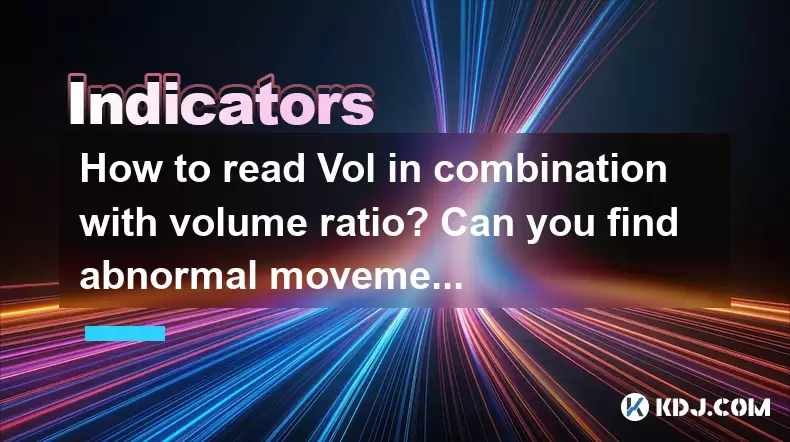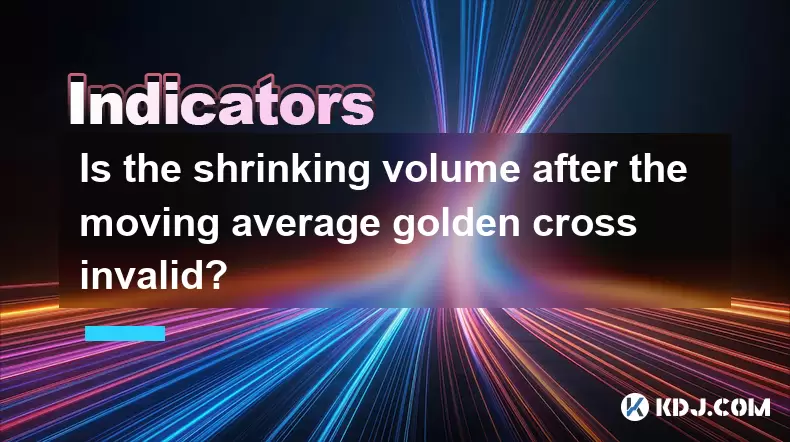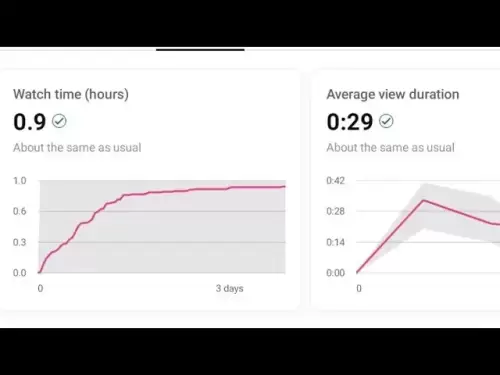-
 Bitcoin
Bitcoin $103,456.1111
0.49% -
 Ethereum
Ethereum $2,414.9631
0.02% -
 Tether USDt
Tether USDt $1.0006
0.05% -
 XRP
XRP $2.1083
0.24% -
 BNB
BNB $634.8760
-0.76% -
 Solana
Solana $139.8437
1.94% -
 USDC
USDC $0.9998
-0.01% -
 TRON
TRON $0.2737
0.97% -
 Dogecoin
Dogecoin $0.1602
0.20% -
 Cardano
Cardano $0.5737
1.08% -
 Hyperliquid
Hyperliquid $32.9779
-2.54% -
 Bitcoin Cash
Bitcoin Cash $474.8886
-1.80% -
 Sui
Sui $2.6272
-1.99% -
 Chainlink
Chainlink $12.4878
0.14% -
 UNUS SED LEO
UNUS SED LEO $8.9234
0.35% -
 Stellar
Stellar $0.2411
-0.18% -
 Avalanche
Avalanche $17.0274
-0.70% -
 Toncoin
Toncoin $2.8936
-1.11% -
 Shiba Inu
Shiba Inu $0.0...01112
-0.58% -
 Litecoin
Litecoin $82.6982
1.33% -
 Hedera
Hedera $0.1423
-0.05% -
 Monero
Monero $314.8455
3.26% -
 Ethena USDe
Ethena USDe $1.0006
0.01% -
 Polkadot
Polkadot $3.4043
1.14% -
 Dai
Dai $0.9999
0.01% -
 Bitget Token
Bitget Token $4.2848
-0.13% -
 Uniswap
Uniswap $6.8748
-5.45% -
 Pepe
Pepe $0.0...09661
0.52% -
 Pi
Pi $0.5359
1.19% -
 Aave
Aave $242.9168
-1.03%
How to read Vol in combination with volume ratio? Can you find abnormal movements in advance?
Volume and volume ratio are key metrics in crypto trading, helping identify trends and abnormal movements by analyzing trading activity and price changes.
May 27, 2025 at 07:56 pm

Understanding the relationship between volume (Vol) and the volume ratio in the context of cryptocurrency trading is essential for identifying potential market movements and abnormal activities. Volume refers to the number of shares or contracts traded in a security or market during a given period, while the volume ratio is a comparative measure that can help traders understand the intensity of trading activity relative to a previous period. By analyzing these metrics together, traders can gain insights into market sentiment and potential price movements.
The Basics of Volume and Volume Ratio
Volume is a critical indicator in the cryptocurrency market because it reflects the level of interest or activity in a particular asset. High volume often indicates strong interest and can signal the start of a new trend, while low volume might suggest a lack of interest or a consolidation phase. On the other hand, the volume ratio is calculated by comparing the current volume to the average volume over a specified period. A volume ratio greater than 1 indicates higher than average trading activity, which could signify increased interest or volatility.
Using Volume and Volume Ratio to Identify Trends
To effectively use volume and volume ratio for trend analysis, traders should look for patterns and divergences. When the price of a cryptocurrency is rising and the volume is increasing, this typically confirms the upward trend, suggesting strong buying pressure. Conversely, if the price is falling and the volume is increasing, this could indicate strong selling pressure and a potential downtrend. The volume ratio can add another layer of analysis. For example, a high volume ratio during a price increase can reinforce the bullish sentiment, while a high volume ratio during a price decrease might signal a bearish trend.
Spotting Abnormal Movements with Volume and Volume Ratio
Identifying abnormal movements in the cryptocurrency market can be challenging, but combining volume and volume ratio can help. Abnormal movements are often characterized by significant deviations from the average trading activity. To spot these, traders should:
- Monitor sudden spikes in volume: A sudden increase in volume, especially when accompanied by a high volume ratio, can indicate an impending significant price movement.
- Look for volume divergences: If the price is moving in one direction but the volume is not supporting it (e.g., price is rising but volume is decreasing), this could signal a potential reversal.
- Analyze the volume ratio over different time frames: Comparing the volume ratio on different time frames (e.g., daily, weekly) can help identify whether the current trading activity is truly abnormal or just a short-term fluctuation.
Practical Example of Using Volume and Volume Ratio
Let's consider a practical example to illustrate how to use volume and volume ratio to identify abnormal movements. Suppose you are analyzing the trading activity of Bitcoin (BTC). You notice that over the past week, the average daily volume has been around 10,000 BTC. On a particular day, the volume jumps to 50,000 BTC, resulting in a volume ratio of 5. This significant increase in volume and volume ratio could indicate an abnormal movement.
- Check the price action: If the price of BTC is also increasing significantly on this day, it might suggest strong buying pressure and a potential continuation of the uptrend.
- Evaluate the context: Consider any news or events that might have triggered this spike in volume. If there are no obvious catalysts, the abnormal movement might be due to insider trading or manipulation.
- Monitor subsequent days: If the high volume and volume ratio persist, it could reinforce the significance of the movement. Conversely, if the volume quickly returns to normal levels, the spike might have been a short-term anomaly.
Tools and Techniques for Advanced Analysis
To enhance your analysis of volume and volume ratio, consider using the following tools and techniques:
- Volume Profile: This tool displays the amount of trading activity at different price levels over a specified period. It can help identify key support and resistance levels based on volume.
- Volume Oscillator: This indicator measures the difference between two moving averages of volume. It can help highlight changes in volume trends and potential shifts in market sentiment.
- Volume Weighted Average Price (VWAP): VWAP is a trading benchmark that gives the average price a security has traded at throughout the day, based on both volume and price. It is often used to determine the market trend and potential entry or exit points.
Combining Volume and Volume Ratio with Other Indicators
For a more comprehensive analysis, it's beneficial to combine volume and volume ratio with other technical indicators. Some useful combinations include:
- Moving Averages: By comparing volume and volume ratio with moving averages, traders can identify whether the current trading activity aligns with the long-term trend.
- Relative Strength Index (RSI): RSI can help confirm whether the market is overbought or oversold, which can be particularly useful when volume and volume ratio indicate a potential reversal.
- Bollinger Bands: These bands can help identify volatility and potential breakouts, especially when combined with high volume and volume ratio readings.
Frequently Asked Questions
Q: Can volume and volume ratio be used to predict price movements in the long term?
A: While volume and volume ratio can provide insights into short-term market sentiment and potential price movements, they are less reliable for long-term predictions. Long-term trends are influenced by a variety of factors, including macroeconomic conditions, regulatory changes, and technological developments, which are not directly reflected in volume metrics.
Q: How often should I check volume and volume ratio to stay informed about market movements?
A: The frequency of checking volume and volume ratio depends on your trading style. Day traders might monitor these metrics multiple times throughout the day, while swing traders might check them daily or weekly. It's important to find a balance that allows you to stay informed without becoming overwhelmed by constant monitoring.
Q: Are there any specific volume patterns that consistently indicate abnormal movements?
A: While there are no universally consistent patterns, some common indicators of abnormal movements include sudden spikes in volume, especially when accompanied by significant price changes, and volume divergences where the price movement does not align with the volume. However, these patterns should always be considered in the context of the broader market and any relevant news or events.
Q: Can volume and volume ratio be used effectively in all types of cryptocurrency markets, including those with low liquidity?
A: Volume and volume ratio can be used in all types of cryptocurrency markets, but their effectiveness may vary. In markets with low liquidity, volume spikes can be more significant and may indicate abnormal movements more clearly. However, the overall lower trading activity can also make these markets more susceptible to manipulation, so additional caution and verification are necessary.
Disclaimer:info@kdj.com
The information provided is not trading advice. kdj.com does not assume any responsibility for any investments made based on the information provided in this article. Cryptocurrencies are highly volatile and it is highly recommended that you invest with caution after thorough research!
If you believe that the content used on this website infringes your copyright, please contact us immediately (info@kdj.com) and we will delete it promptly.
- Inherited Riches: Rare Coin Collection Valued at £6,000 – Is Your Change Worth a Fortune?
- 2025-06-22 12:25:12
- Fiat-Backed Stablecoins, Tokenized Treasuries, and DeFi: A New York Minute on the Future of Finance
- 2025-06-22 12:25:12
- BlockDAG, Tron, and Toncoin: Navigating the Crypto Landscape in 2025
- 2025-06-22 12:35:12
- Navigating the Wild West: Rug Pulls, Meme Coins, and Market Scams in Crypto
- 2025-06-22 12:35:12
- Ruvi AI: The Audited Token Poised to Outshine Shiba Inu
- 2025-06-22 10:25:12
- Dypians, DeFi, and Sei Network: A Deep Dive into the Latest Trends
- 2025-06-22 10:25:12
Related knowledge

Does the second surge in the RSI overbought zone induce more?
Jun 22,2025 at 08:35am
Understanding the RSI Overbought ZoneThe Relative Strength Index (RSI) is a momentum oscillator commonly used in technical analysis to measure the speed and change of price movements. It ranges from 0 to 100, with values above 70 typically considered overbought and values below 30 considered oversold. When the RSI enters the overbought zone for the firs...

Does the sudden contraction of ATR indicate the end of the trend?
Jun 20,2025 at 11:14pm
Understanding ATR and Its Role in Technical AnalysisThe Average True Range (ATR) is a technical indicator used to measure market volatility. Developed by J. Welles Wilder, ATR calculates the average range of price movement over a specified period, typically 14 periods. It does not indicate direction—only volatility. Traders use ATR to gauge how much an ...

Is it invalid if the DMI crosses but the ADX does not expand?
Jun 21,2025 at 09:35am
Understanding the DMI and ADX RelationshipIn technical analysis, the Directional Movement Index (DMI) consists of two lines: +DI (Positive Directional Indicator) and -DI (Negative Directional Indicator). These indicators are used to determine the direction of a trend. When +DI crosses above -DI, it is often interpreted as a bullish signal, while the opp...

How to filter false signals when the SAR indicator frequently flips?
Jun 21,2025 at 08:43pm
Understanding the SAR Indicator and Its BehaviorThe SAR (Stop and Reverse) indicator is a popular technical analysis tool used in cryptocurrency trading to identify potential reversals in price movement. It appears as a series of dots placed either above or below the price chart, signaling bullish or bearish trends. When the dots are below the price, it...

Is the trend continuation when the Williams indicator is oversold but there is no rebound?
Jun 20,2025 at 11:42pm
Understanding the Williams %R IndicatorThe Williams %R indicator, also known as the Williams Percent Range, is a momentum oscillator used in technical analysis to identify overbought and oversold levels in price movements. It typically ranges from 0 to -100, where values above -20 are considered overbought and values below -80 are considered oversold. T...

Is the shrinking volume after the moving average golden cross invalid?
Jun 22,2025 at 10:42am
Understanding the Moving Average Golden Cross in CryptocurrencyIn the world of cryptocurrency trading, technical indicators play a crucial role in decision-making. One such indicator is the moving average golden cross, which occurs when a short-term moving average crosses above a long-term moving average, typically signaling a bullish trend. This event ...

Does the second surge in the RSI overbought zone induce more?
Jun 22,2025 at 08:35am
Understanding the RSI Overbought ZoneThe Relative Strength Index (RSI) is a momentum oscillator commonly used in technical analysis to measure the speed and change of price movements. It ranges from 0 to 100, with values above 70 typically considered overbought and values below 30 considered oversold. When the RSI enters the overbought zone for the firs...

Does the sudden contraction of ATR indicate the end of the trend?
Jun 20,2025 at 11:14pm
Understanding ATR and Its Role in Technical AnalysisThe Average True Range (ATR) is a technical indicator used to measure market volatility. Developed by J. Welles Wilder, ATR calculates the average range of price movement over a specified period, typically 14 periods. It does not indicate direction—only volatility. Traders use ATR to gauge how much an ...

Is it invalid if the DMI crosses but the ADX does not expand?
Jun 21,2025 at 09:35am
Understanding the DMI and ADX RelationshipIn technical analysis, the Directional Movement Index (DMI) consists of two lines: +DI (Positive Directional Indicator) and -DI (Negative Directional Indicator). These indicators are used to determine the direction of a trend. When +DI crosses above -DI, it is often interpreted as a bullish signal, while the opp...

How to filter false signals when the SAR indicator frequently flips?
Jun 21,2025 at 08:43pm
Understanding the SAR Indicator and Its BehaviorThe SAR (Stop and Reverse) indicator is a popular technical analysis tool used in cryptocurrency trading to identify potential reversals in price movement. It appears as a series of dots placed either above or below the price chart, signaling bullish or bearish trends. When the dots are below the price, it...

Is the trend continuation when the Williams indicator is oversold but there is no rebound?
Jun 20,2025 at 11:42pm
Understanding the Williams %R IndicatorThe Williams %R indicator, also known as the Williams Percent Range, is a momentum oscillator used in technical analysis to identify overbought and oversold levels in price movements. It typically ranges from 0 to -100, where values above -20 are considered overbought and values below -80 are considered oversold. T...

Is the shrinking volume after the moving average golden cross invalid?
Jun 22,2025 at 10:42am
Understanding the Moving Average Golden Cross in CryptocurrencyIn the world of cryptocurrency trading, technical indicators play a crucial role in decision-making. One such indicator is the moving average golden cross, which occurs when a short-term moving average crosses above a long-term moving average, typically signaling a bullish trend. This event ...
See all articles
























































































